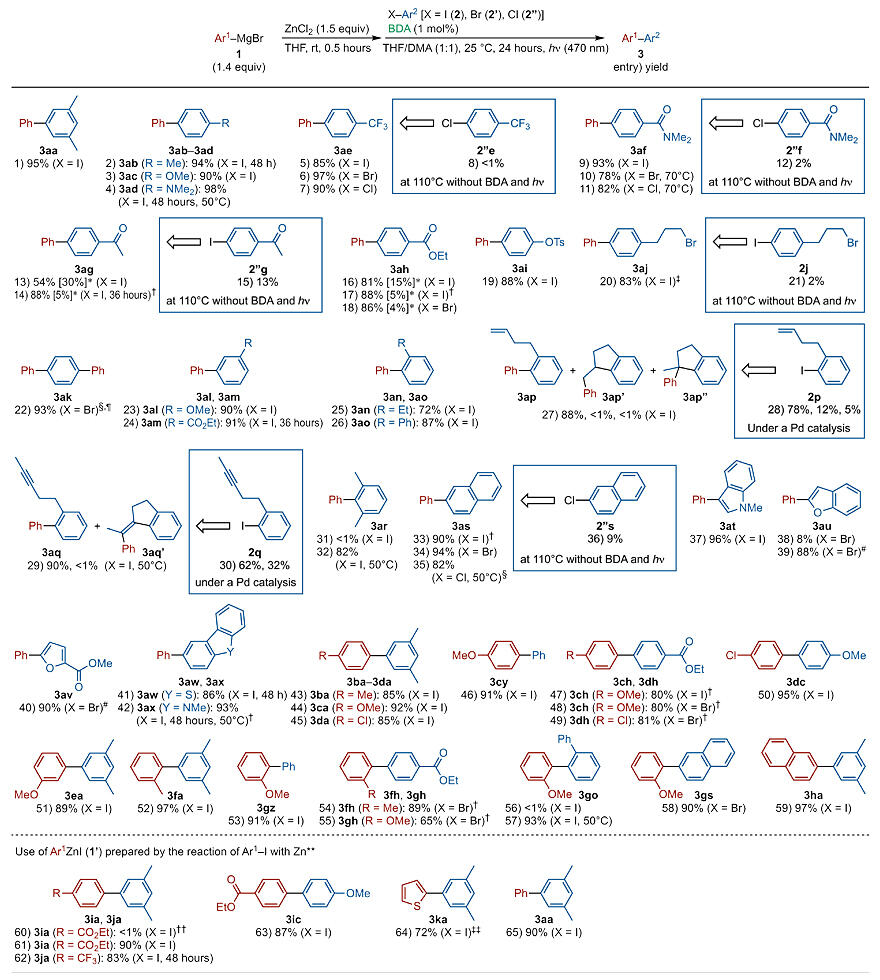The Negishi and Suzuki-Miyaura cross-coupling reactions were awarded the Nobel Prize in Chemistry in 2010. These reactions enabled the convenient synthesis of biaryl frameworks, which are commonly found in the structures of functional materials such as pharmaceuticals and electronic materials. However, they require rare metal palladium catalysts and a significant amount of thermal energy.
In 2010, a research group led by Professor Eiji Shirakawa at Kwansei Gakuin University discovered the world's first transition metal-free cross-coupling reaction. This reaction, which is called an "electron-catalyzed" reaction, is being actively studied worldwide. However, a challenge in increasing the chemical yield is the requirement of high temperatures (above 100 ℃).
Shirakawa and Professor Manabu Abe at the Graduate School of Advanced Science and Engineering at Hiroshima University, along with their research group, discovered that the photoredox catalyst BDA, which responds to solar light, enables the electron-catalyzed Negishi cross-coupling reaction between aryl zinc reagents and aryl halides at room temperature. They also revealed that not only the photoredox catalyst but also the photoexcitation of anion radical intermediates is crucial for enabling the electron-catalyzed reaction at room temperature. This discovery has expanded the application range of electron-catalyzed reactions, which were previously limited, allowing the convenient synthesis of many useful compounds. Their research was published in Science Advances.

Provided by Hiroshima University
Journal Information
Publication: Science Advances
Title: Manipulation of an electron by photoirradiation in the electron-catalyzed cross-coupling reaction
DOI: 10.1126/sciadv.adh3544
This article has been translated by JST with permission from The Science News Ltd. (https://sci-news.co.jp/). Unauthorized reproduction of the article and photographs is prohibited.




